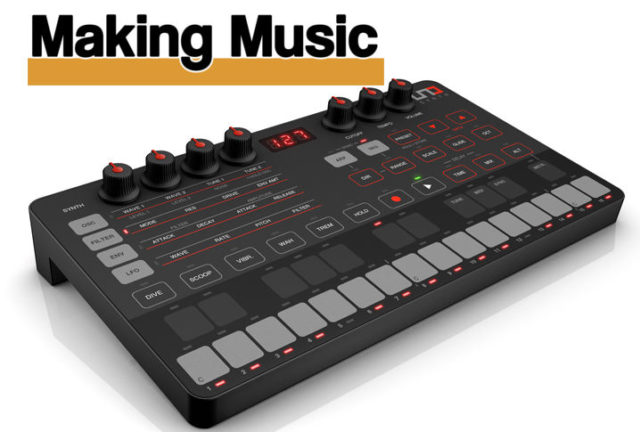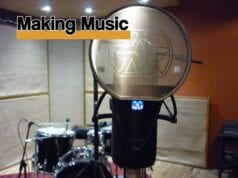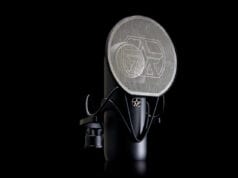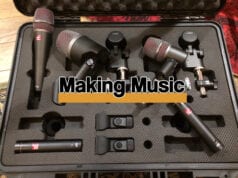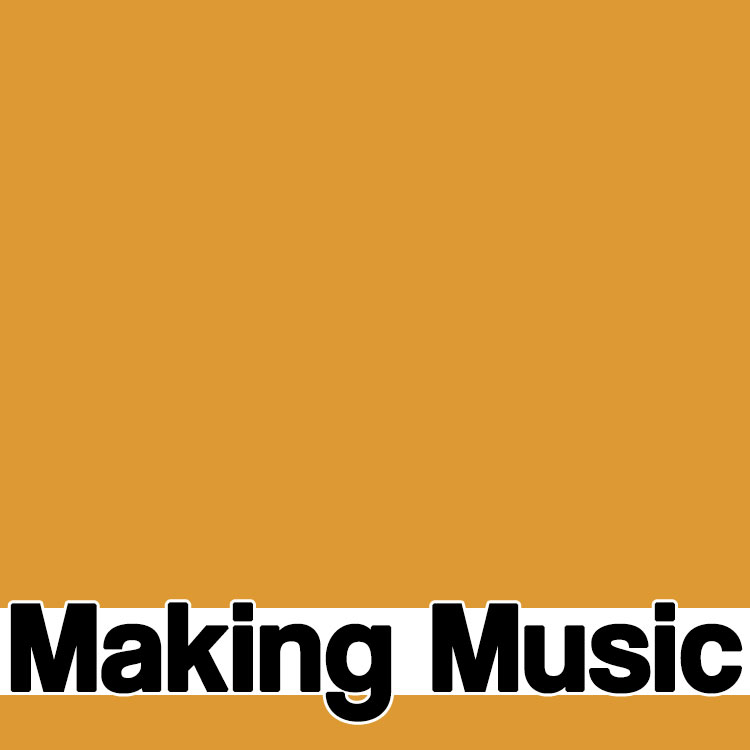Last Updated on April 3, 2022 by Andrew Culture
Manufacturer: IK Multimedia
Website: IK Multimedia UNO
Price (at time of publication) €199.99 excl. VAT
For some years now, IK Multimedia has been making in-roads into the hardware-for-music-making business. After their success with software (T-Racks, AmpliTube, SampleTank etc.) they have gone on to design and produce microphone and guitar interfaces for desktop and mobile devices, MIDI controllers and even monitor speakers.
Now, in a relatively new direction for the company, they have released an analogue synthesizer. It’s clear if you look at the product range that IKM has, portability is a high priority for them and the UNO synth is no exception. This diminutive box is designed to make music on the move, just as much as for desktop use, but does this make for a good synth. Read on to see what we think…
What is the UNO?
The IK Multimedia UNO synth (UNO from now on) is a monophonic, true analogue synthesizer. It encompasses 2 independent VCOs, a noise generator and multimode VCF and VCA. Add to this a multi-pattern LFO, overdrive and onboard delay and you have the makings of a very tweakable box for noise making.
One More For The Road
What’s slightly amazing is that IKM has packed all this into a box measuring no more than 26 cm x 15 cm. The underside has a one-piece leg (of sorts) that raises the unit up at the back meaning the viewing angle is a bit more pleasant than if it was completely flat. This is also where the battery compartment for the required four AA batteries resides.
This is one of the major USPs for the UNO – designed for the musician on the move. There has been a spate recently of analogue synths (re-imaginings as well as new products) aimed at the backpack musician, but I can’t recall one that has a similar spec as well as having the potential to be used purely on battery power, away from a computer or tablet.

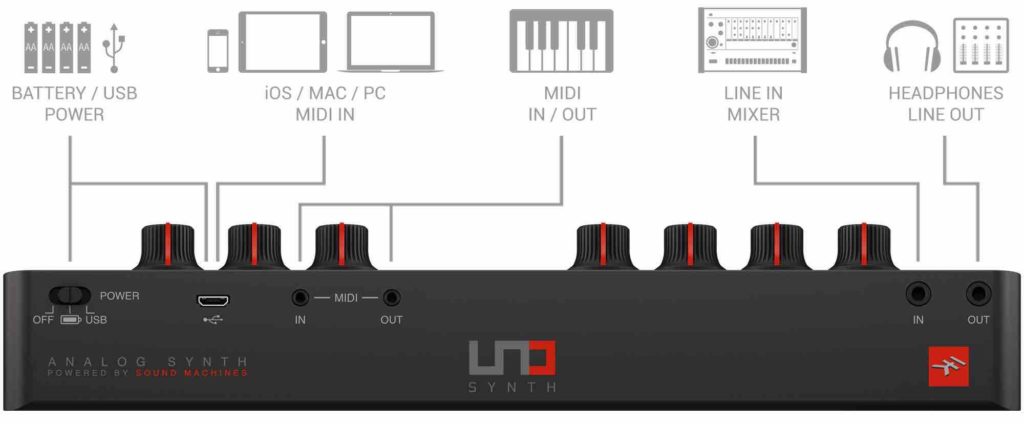
The rear of the UNO is where you’ll find all the necessary connections to the outside world. From left to right there is the 3-position power switch (off, battery, USB), a micro USB socket, MIDI In and Out (on 2.5mm mini-jacks) and audio In and Out on 3.5mm mini-jacks, although these are summed to mono.
The One and Only
The top of the UNO is made up of a single piece of slightly textured plastic save for 7 control knobs. 3 of these knobs have a single, fixed-function (cutoff, tempo and volume) whereas the remaining 4 have control over various functions of the oscillators, amplitude and envelope filters and the LFO with the help of a selection matrix.
Apart from these knobs, there are no other moving parts to speak of. The textured top however is touch responsive and is home to ‘buttons’ that give access to everything else, from the on-board sequencer and arpeggiator to performance controls such as tremolo and vibrato. Visual feedback from turning one of these knobs or pressing a button is via an associated LED, or shown on the 3-character display that uses abbreviations as well as numerical information.
Visually reminiscent of the Sinclair ZX81 (showing your age now! – Ed.) although it is touch capacitive, the buttons and keyboard section are fairly usable/playable, but they are no substitute for proper piano-style keys. More on this later…

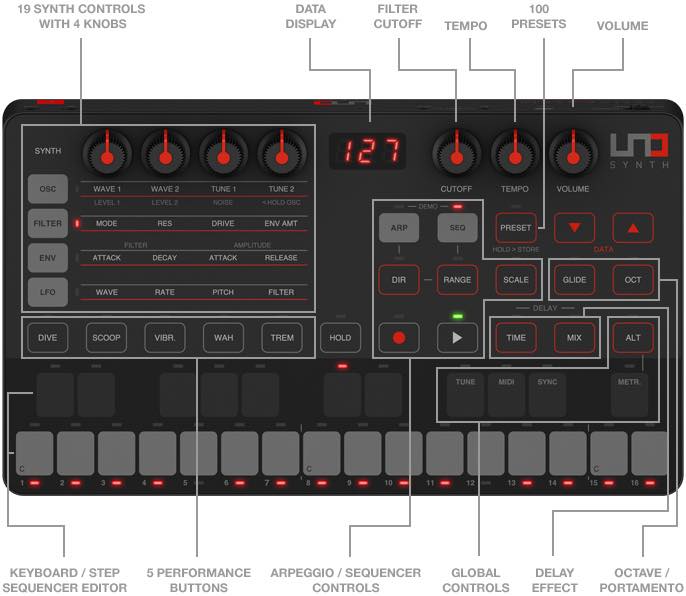
One Step Beyond
There’s an on-board sequencer that, although seems basic, is more than functional. It only has 16-steps, saved on a per-sound basis, but you can’t chain the sequences together, so anyone after a usable, long-form performance tool will be disappointed. That said, there are three recording modes (step, real-time and step edit) and they’re quite easy to use as a simple way of capturing musical ideas. You can include control changes such as oscillator and filter adjustments within the sequence, as well as the usual octave and note length.
One Way Or Another
There’s also a built-in arpeggiator with the choice of 10 patterns, from the usual ups and downs in various combinations, as well as random and ‘as played’. Choosing the direction of the arpeggiator is as simple as pressing the DIR button and using the DATA buttons to change the pattern, with the abbreviated name being shown on the display.
One Moment in Time
As well as the two independent VCOs, there is an on-board delay to stretch the ‘monophonic’ synth even further away from a single sound, with buttons to adjust the time and the mix, with a fixed amount of feedback. There are also performance controls to bring some additional articulation to your sounds, encompassing Vibrato, Wah and Tremolo (all driven by the LFO settings) and scoop and dive buttons that apply the filter envelope decay to the oscillator pitch.
That’s a fairly good set of performance, articulation and sound bending tools on board, but the features are greatly expanded when used in conjunction with the UNO App.
One Thing Leads To Another
Hooking up the UNO via USB to a computer or mobile device means you can use the bespoke UNO synth editor. I used this with Logic Pro X and after installation and hook-up, the editor appears as a virtual instrument just as any other, but it lets you in on a much wider range of control options. This is just an editor for the synth, so you are still in an analogue world of sound, although it is nicely integrated in the digital workstation realm.

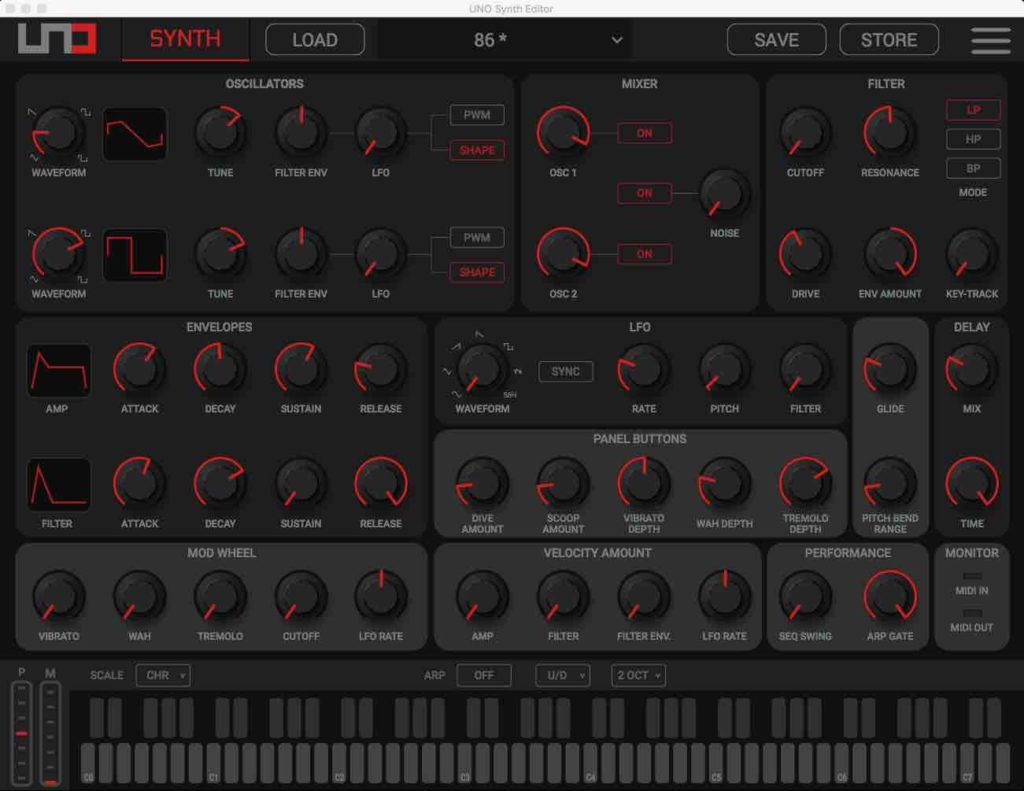
For example, you now have access to the full ADSR parameters for both the amplitude and filter envelopes (you only get AR and AD respectively on the hardware). You can also adapt the amount of range for the performance controls (Vib, Wah etc).
The editor has a really pleasing and scalable GUI, styled to match the hardware unit, with everything on one page and gives you the ability to save and load presets from your computer onto the unit and vice versa.
One Nation Under A Groove
So, what about the sounds and how does it play. The UNO comes with 100 presets, 80 of which are over-writable enabling you to store your tweaked creations on the hardware. The starting presets are what you would expect to see, encompassing basses, leads, pads, sweeps, drones, plucks and sound effects. However, once you get your hands on the controls (or the editor) some really interesting stuff can take place.
Having the two independent oscillators means you can create some thick sounding bass tones and drones, or something more musical by tuning them a fifth apart, for example. Having continuously variable oscillator shapes from triangle, through saw to square wave gives you some really great sound-shaping opportunities and being analogue, they sound warm and rich. You can mix between the oscillators and a separate noise generator as well, before feeding into the filter section.
It’s also a good move to have the cutoff control available at all times without having to dive into the matrix, as this is a nice live performance control. Having said that, the keyboard buttons are a little uninspiring and not a great way to give your grand performance. If you’re using it to make music on the move then they are adequate, but it is a definite improvement if you control the UNO with a piano-style keyboard controller. If you hook up the UNO to one that can output MIDI using 5-pin DIN then you still don’t need to go near a computer or mobile device if you don’t want to.

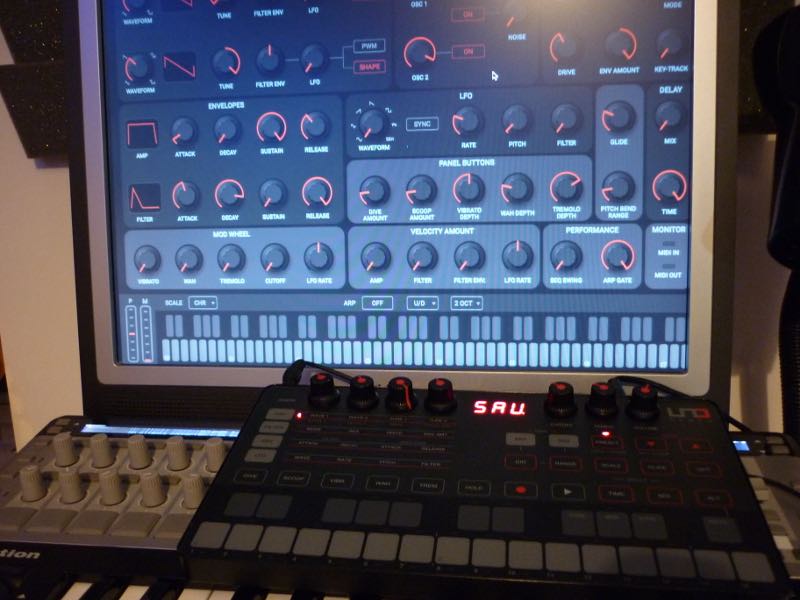
In Summary
It’s a-one for the money…
I guess my gripes with the UNO are relatively small and probably a bit pedantic. If powered by USB and the audio outputs are connected to an interface on the same computer, this can sometimes exhibit some ground noise, although IK Multimedia have highlighted this and offered something of a solution. The keyboard isn’t very nice to play and having MIDI-on-mini-jack breakout isn’t perfect, but both of these negatives are understandable given what IKM want to achieve.
Overall then, the UNO is versatile and a good compromise of what you may want in an analogue synth. It’s small enough to fit in a rucksack but has a big sound from the dual oscillators and various sound mangling tools onboard. The sequencer gives you just enough scope as an idea pad, but doesn’t quite go far enough as a live performance tool. Install it into a DAW-based studio via the app and you have a capable analogue sound generator that can save your patches without resorting to scribbling your settings down. For the current price (which is a bit of a steal), we recommend you go and demo it to see if it fits your working requirements.



